
Become a member
Join today and help protect nature, beauty and history – for everyone, for ever. Enjoy access to more than 500 places with National Trust membership.
The family home of world-famous writer Rudyard Kipling, known for The Jungle Book and Just So Stories. Built in 1634, this Jacobean house is in the Sussex countryside.
Bateman's Lane, Burwash, East Sussex, TN19 7DS

| Asset | Opening time |
|---|---|
| House | 11:00 - 15:30 |
| Garden | 10:00 - 16:00 |
| Shop | 10:00 - 16:00 |
| Tea-room | 10:00 - 16:00 |
| Park Mill | 10:00 - 15:45 |
| Second-hand bookshop | 11:00 - 16:00 |
Please note: Last entry to the grounds and house is 30 minutes before the advertised closing time.
| Ticket type | With Gift Aid | Without Gift Aid |
|---|---|---|
| Adult (18+) | £18.70 | £17.00 |
| Child (5-17) under 5s free | £9.40 | £8.50 |
| Family (2 Adults and up to 3 children) | £46.80 | £42.50 |
| Family, one adult | £28.10 | £25.50 |
Assistance dogs only in the house, mill, and shop
Second-hand bookshop on the ground floor of the house
Free parking for National Trust members, non-members £4 per car.
Dogs on short leads welcome in the garden and estate. Assistance dogs only in the house, mill, and shop
Six 22kW electric vehicle charging points are available in the main car park. Chargers can be accessed using mobile app, RFID card, or contactless payment device. Visit our EV charging provider RAW Charging’s website to download the app in advance of your visit. Chargers are only available to visitors during property opening hours.
Electric vehicle charging point - more informationGifts, homeware, plants and Kipling books in the Oast House shop
Tea-room by the Mulberry Garden serves drinks, light lunches and cakes
Toilets, accessible toilet and baby-changing facilities next to visitor reception. Additional toilets by the tea-room
Partly accessible grounds, some uneven paths. Blue Badge parking. Accessible toilet near visitor reception. Wheelchairs available to borrow.
Map with accessible route available from visitor reception
Accessible route and/or map - more informationAccessible toilet at visitor reception
Braille guide available in the house on request
Designated accessible parking near visitor reception. Tarmac car park and path to visitor reception
Steep slope into the garden from visitor reception – alternative drop-off point by arrangement with visitor reception
Fixed induction loops available at visitor reception, tea-room and shop. Portable loop available on request
Large print guide to the house available on request
Steep slope into the garden from visitor reception – alternative drop-off point by arrangement. Grass ramps in the garden. Ramped access to side door of shop
Seating available in the house if required. Benches throughout the garden. At busier times, to enter the house there may occasionally be a queue in the garden
Staircases to and from the first floor of the house. Partly accessible grounds with some steps, grass ramps and brick paths. Stepped access to Park Mill
Wheelchairs available to borrow from visitor reception
Bring the whole family to Bateman's. With ample space to play and explore, it's the perfect place for curious minds. Upcoming events include an Easter egg hunt, live music performances, a pesky pests activity trail, and much more.

Take part in a variety of events all year round at Bateman's. This year, look forward family activity trails, craft workshops, and more!
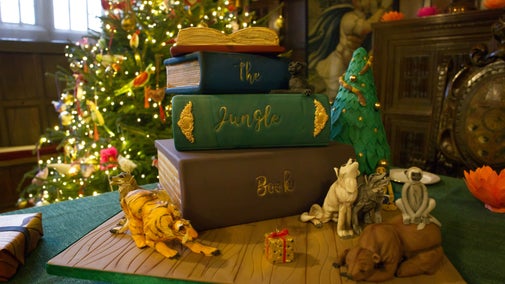
Bateman's is a two pawprint rated place. Dogs are welcome in all outdoor areas. Explore the garden and estate together and enjoy a break with benches outside the tea-room.
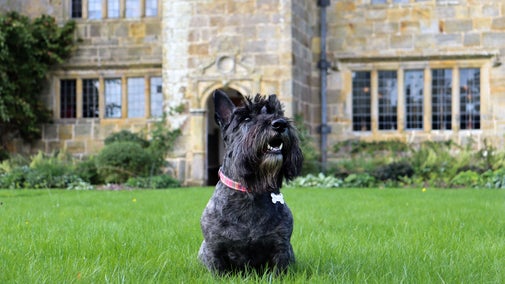
Bring your group and discover what is so special about Bateman’s – once home to Rudyard Kipling, with its pretty secluded garden, 13th-century watermill and acres of countryside.
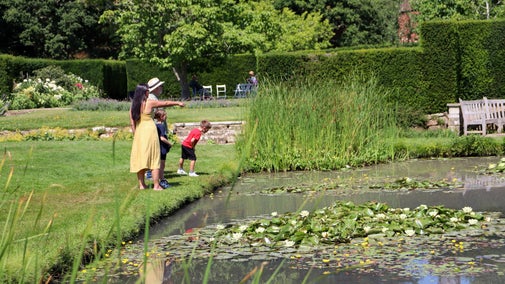
Discover where to eat and shop at Bateman’s, the home of author Rudyard Kipling. Stop for a hot drink or light meal, and then browse for the perfect gift or pre-loved book.

Take a look at the map of Bateman's to help you plan your visit.

A 17th-century house, set in the landscape of the Sussex Weald; home of Rudyard Kipling.
An 18th-century working watermill which was much loved by Rudyard Kipling and featured in his stories written at Bateman’s.
The garden that made Rudyard Kipling feel like an English country gentleman, with spring blossom, summer roses, autumn apples and winter trees.
300 acres of High Weald countryside with small fields, hedgerows, ancient trees, hidden ponds and magnificent views across the Dudwell Valley.
Play area with swings, see-saw, climbing frames and space to build a den or enjoy a picnic. Carved oak tree centrepiece featuring images of Sussex wildlife.
Serves hot and cold drinks, light lunches, ice cream and homemade cakes, with indoor and outdoor seating.
Oast House shop filled with gifts, homeware, toys, plants and local artisan products. Special range of Kipling books. Second-hand bookshop stocked with pre-loved books.
This festive season, the jungle comes alive with a bigger, bolder, and even more enchanting Jungle Book Christmas. Celebrate Rudyard Kipling’s timeless tale at Bateman's, his home for over 30 years. See the house transformed with colourful handcrafted decorations, twinkling Christmas trees, glowing fireplaces, and familiar Jungle Book characters. Dates: On until Sunday 4 January (closed 24 & 25 December) | Times: 11.00am to 3.30pm | Free, normal admission applies

Explore the garden at Bateman’s on this festive family-friendly spotter trail. Can you find all the hidden Christmas presents and match them to the correct characters? Don’t forget to pick up your prize once you’ve finished! 15 November to 4 January (closed 24 & 25 December) | 10.00am to 3.30pm | £2, normal admission applies (includes a small prize)

Explore new places with your furry friend until 28 February 2026. Pick up your pooch passport from visitor reception and discover new places with your best friend. Collect stamps at every participating National Trust property and as a reward, your loyal companion will receive delicious treats. Earn six stamps for a bag of Forthglade dog treats, and reach twelve for a loyal explorer dog tag. Forthglade is a National Trust partner and has generously supported us in this programme by providing treats. Running until 28 February 2026.

There’s plenty of things to see and do waiting to be discovered at Bateman's. With its beautiful garden and a host of family-friendly events all year round, it's the perfect day out.
Planning a day out with family? Explore the home of Jungle Book author, Rudyard Kipling. There's plenty of space to play and explore outdoors. Plus, take part in a variety of family-friendly events all year round. Don’t forget to visit our tea-room and shop where you'll find treats for all the family. Get ready to create memories that will last a lifetime.

Discover the house at Bateman's. Explore the home of Rudyard Kipling, from the ornate Jacobean hall to the author's own study – left just as it was during his life.

The Kipling Collection Exhibition Room has been enhanced to highlight the life, work, travels, and legacy of Nobel Prize-winning author Rudyard Kipling, one of history's most influential and debated literary figures. In 1939, Kipling's wife, Caroline, entrusted the Bateman’s estate to the National Trust, with the support of their only surviving child, Elsie. Elsie generously donated many unique items related to her father, some of which are now featured in the exhibition. This article gives more information on some of the objects now on display at Bateman's.
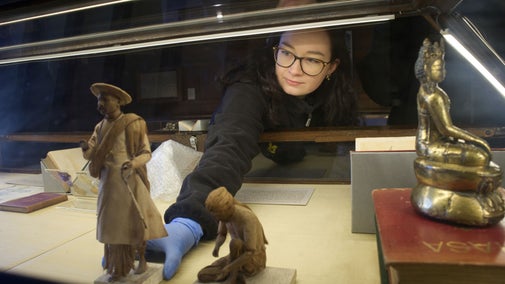
There's lots to see and do this festive season at Bateman's, in East Sussex. Explore the home of the writer Rudyard Kipling decorated for Christmas.
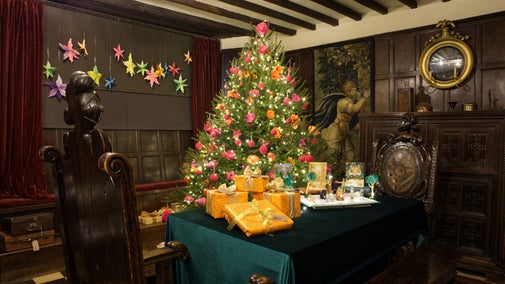
Discover the garden at Bateman's. Find out what to see, from the Rose Garden designed by Kipling to wildflowers, an orchard and even a working mill.
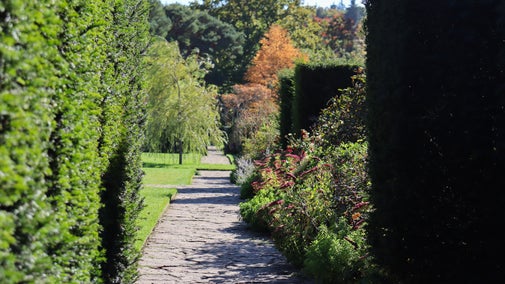
Explore the estate at Bateman's. Discover what to see and do, from wildlife to seasonal plants and walks, in a landscape that inspired Kipling.

Find out about bringing your dog to Bateman’s where you can explore the beautiful grounds of Rudyard Kipling's former home together. Bateman's is a two pawprint rated place.

Find out about walks across the estate at Bateman's. Take in old industry, village life and ancient woodland as you explore the beautiful countryside so loved by Kipling.

This 2.5-mile walk at Bateman's takes in views over the Sussex countryside, a landscape that inspired Rudyard Kipling.

Discover where to eat and shop at Bateman’s, the home of author Rudyard Kipling. Stop for a hot drink or light meal, and then browse for the perfect gift or pre-loved book.

Help The Jungle Book characters find their Christmas presents on this outdoor spotter trail.
Pooch passport is back! Explore new places with your furry friend until 28 February 2026. Find out more about the scheme and discover dog-friendly places to explore together.
Enter the jungle and a world of warmth and colour, tradition, and creativity as you experience ‘The Jungle Book Christmas’ at Bateman’s this year.
On display this year is artwork by Hastings-based artist Rebecca Child who has created a series of intricate tunnel books interpreting scenes from The Jungle Book.
'That's She! The Only She! Make an honest woman of her - quick!' was how Rudyard Kipling and his wife, Carrie, felt the first time they saw Bateman's.
Surrounded by the wooded landscape of the Sussex Weald, this 17th-century house, with its mullioned windows and oak beams, provided a much needed sanctuary to this world-famous writer and inspired his work.
The rooms, described by him as 'untouched and unfaked', remain much as he left them, with oak furniture, Persian rugs and artefacts reflecting his strong association with India. Kipling wrote Puck of Pook’s Hill and Rewards and Fairies at Bateman's, which includes the poem ‘If’. He was awarded the Nobel Prize for literature in 1907.
Bateman's is very much a family home that feels as though the Kiplings have just gone out for the day.
Discover the history of Bateman's. Explore its 17th-century beginnings and why the house and garden were so special to Rudyard Kipling and his family.

Explore the objects and works of art we care for at Bateman's on the National Trust Collections website.

Read about what the garden and outdoors team are doing at Bateman’s.
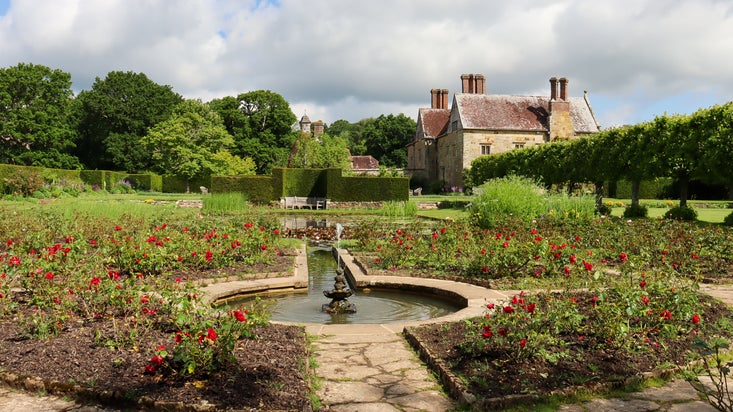
Whether you want to meet new people, learn fresh skills or simply give something back, you’ll enjoy being part of the enthusiastic volunteer team at Bateman’s. There are many ways you can get involved at Bateman’s, from gardening to meeting visitors, or from helping at events to guiding in the mill and more.

Interested in making the most of the National Trust near you in Sussex? Members of National Trust supporter groups across Sussex help to raise funds for Bateman's and other local properties, while also getting together for days out, talks and volunteering at their local places. Discover how you can get involved.
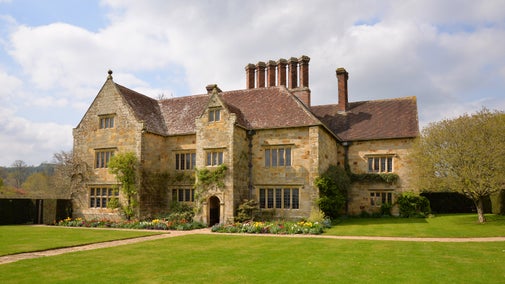

Join today and help protect nature, beauty and history – for everyone, for ever. Enjoy access to more than 500 places with National Trust membership.
By sharing your email address you’re agreeing to receive marketing emails from the National Trust and confirm you’re 18 years old or over. Please see our for more information on how we look after your personal data.